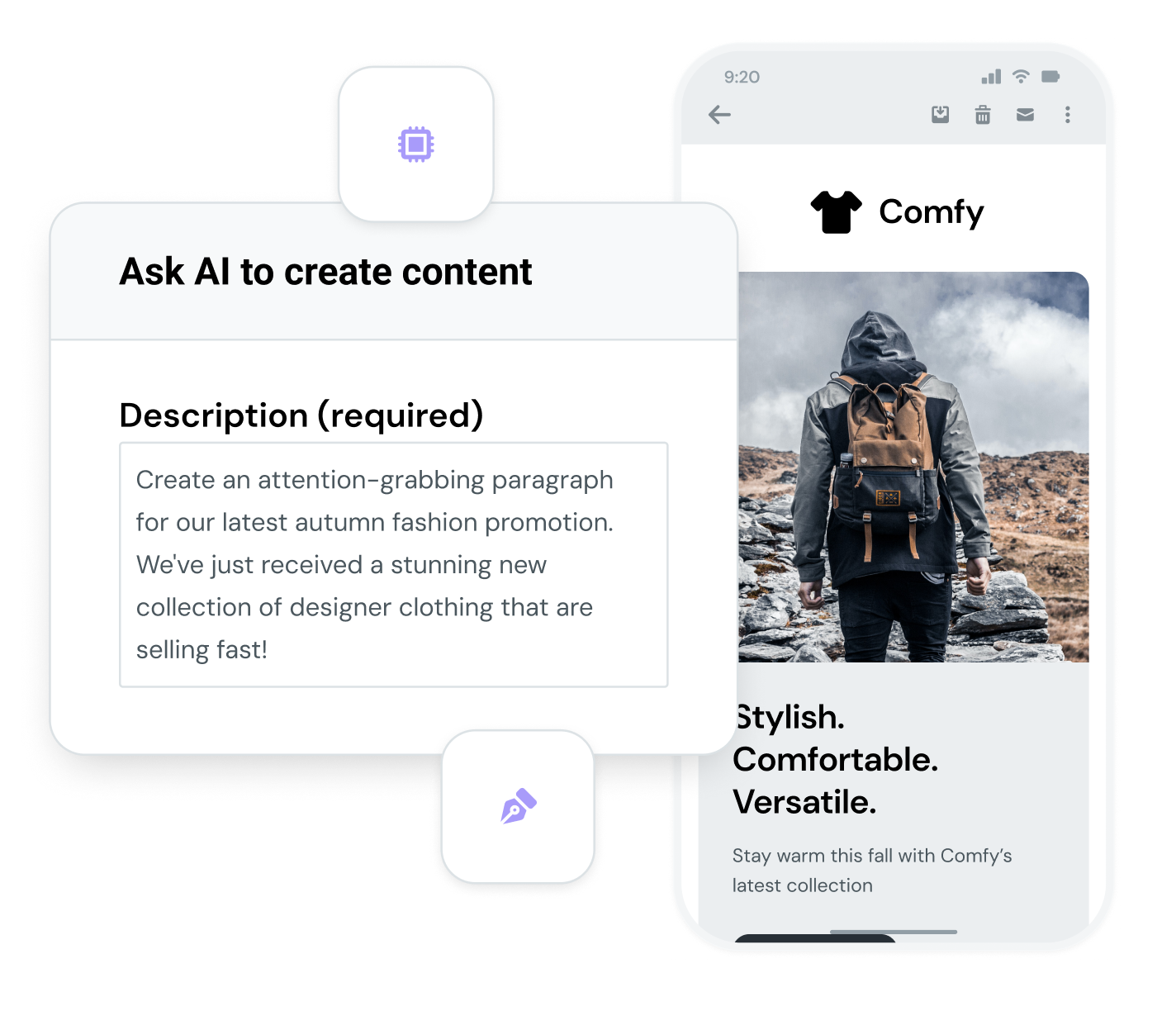Company
Email Academy: Ask us anything – live Q&A (recap)

Company

With 2024 winding down to a close, we decided to shake things up a bit with our Email Academy format. Instead of the usual, this time we hosted a live Q&A session where attendees set the agenda. Hosts Natalie Lynch, Senior Product Manager, and Julia Ritter, Senior Email Marketing Manager, offered insights into email marketing best practices, deliverability strategies, and Mailjet’s features – all while addressing over 200 audience-submitted questions.
Here’s a comprehensive recap of the key takeaways, strategies, and answers from the session. We grouped them into three categories for easier reading:
One of the topics covered during the session was email deliverability—specifically, the importance of domain authentication. SPF, DKIM, and DMARC – the three standard email authentication protocols – are not just acronyms; they’re essential tools to establish trust with internet service providers (ISPs). Natalie emphasized that these records authenticate your domain and protect your brand from phishing attempts, ensuring your emails land in inboxes instead of spam folders.
DMARC adoption, while still less common among smaller senders, is expected to grow. Platforms like Google and Yahoo are increasingly enforcing stricter requirements for authentication. Natalie’s advice? “Adopt early. It’s a simple step that builds trust and enhances your sender reputation.”
We sat down with Yahoo’s Senior Director of Product, Marcel Becker, and Google’s Director of Product Anti-Abuse and Safety, Anu Yamunan, to find out with these changes mean for email senders.
Your sender reputation is a score that identifies you as a trusted – or mistrusted – sender. Different mailbox providers use different scores to judge whether to classify your mail as spam. Why should you care? Well, it directly affects email deliverability. To improve it, you need to:
Struggling with a low sender reputation? Start by authenticating your domain, cleaning your lists, and gradually ramping up sends. Engagement – such as clicks and opens – is critical because ISPs use it to decide whether your emails are desirable or spam.
Another popular question we received was regarding transactional emails, and why they can sometimes land in spam folders. Natalie recommended separating marketing and transactional sends into distinct sub-accounts or domains to protect transactional reputation.
Also, make sure your transactional emails are truly triggered by user actions, such as password resets or order confirmations. Including an unsubscribe link in non-critical transactional messages, like monthly summaries, can also improve deliverability.
A topic that was top of attendees’ minds was how to increase campaign engagement. An email marketer’s million-dollar question, right? Well, one effective tactic to try is email personalization.
As we well now, inboxes are crowded and full of distractions. Personalized emails provide a way to cut through the clutter and show subscribers that you have something to say that matters to them. According to survey results in our report, Inbox Insights 2023, nearly 60% of the most successful email marketers think personalization is one of the best ways to increase engagement.
While standard personalization tactics such as addressing recipients by name are effective, hyper-personalization takes things further by using behavioral data.
An abandoned cart email is a perfect example. Don’t just say, ‘You forgot something.’ Show them exactly what’s in their cart.
Dynamic content and behavioral triggers can make emails feel tailor-made, which significantly boosts engagement rates.
Another engagement tactic discussed during the Q&A was launching re-engagement campaigns. These campaigns help reconnect with subscribers who haven’t interacted with your emails in a while. Here’s how to approach them:
Both Natalie and Julia stressed the importance of delivering what your audience wants. Whether it’s product recommendations or educational resources, aligning content with subscriber preferences is vital.
If someone’s only ever bought earrings from you, don’t send them emails about jeans,
Another area to generate a lot of interest from attendees was campaign optimization, particularly A/B testing best practices. Now, A/B testing in email marketing allows you to test what campaign works best, what message resonates with your audience, or what call-to-action buttons (CTA) generate the most clicks.
But perhaps most importantly, A/B testing allows you to refine campaigns based on actual subscriber behavior. You can then use results to create data-backed strategies for future campaigns.
Sending emails when your audience is most likely to engage can dramatically improve open and click rates. Again, use historical data to identify optimal send times and segment audiences by time zones if necessary.
Sometimes, low engagement rates may indicate deliverability issues. As we ran through earlier, ensure that you authenticate your domain, regularly clean your email lists, and that you’re sending content to engaged subscribers.
To wrap things up, we briefly looked at what we think will be topics of interest coming into 2025. And yes, artificial intelligence (AI) is one of them. AI tools are becoming increasingly popular for email marketing. Some of the areas they assist with include:
However, Julia emphasized that while AI is helpful, it’s best used as an assistant rather than a replacement for human creativity.

Mailjet’s AI Copy Generator fine tunes its decisions and recommendation through successful email campaigns via content, copy and performance. This aids in its ability to replicate effective writing styles, persuasive languages, and engagement strategies.
Looking ahead, Natalie predicts that we’ll see a greater adoption of DMARC (authentication protocol), stricter ISP regulations, and a continued focus on engagement metrics. We’ll actually be exploring these email marketing trends in-depth during our upcoming Email Academy webinar on January 28, 2025.
We also received several requests to run through some additional email marketing areas. Three of the most popular included:
Security programs and bot activity can inflate click and open rates. Natalie recommended cross-referencing metrics, such as the time between an open and a click, to identify non-human activity.
While not required, validating your list ensures better deliverability. We highly recommend you remove invalid addresses, spam traps, and disengaged contacts regularly.
Julia advised starting with a re-engagement campaign. A preference center can also help – allowing subscribers to specify what content they’re interested in ensures compliance and relevancy.
Watch back the full Email Academy Q&A session
This interactive Q&A session underscored the importance of staying proactive, authentic, and data-driven in email marketing. From deliverability basics to advanced personalization techniques, there’s always room to refine your strategy and connect more meaningfully with your audience.
We’re grateful for the enthusiastic participation and thoughtful questions from our attendees. If you missed the live session, the recording is available on Mailjet’s YouTube channel. And don’t forget to join us on January 28 for our webinar on email trends for 2025.
Here’s to a successful year in email marketing – and beyond!